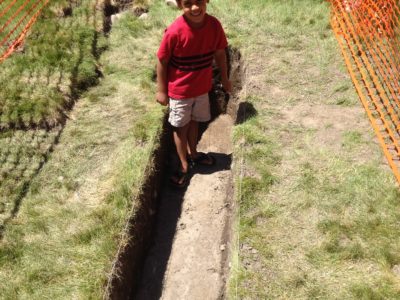by Megan Sirak, East Carolina University
In January 2016 Washington D.C. hosted the 49th Annual Conference on Historical and Underwater Archaeology. I was encouraged by one of my professors to attend as he thought it would benefit me. He could not have been more correct.
While attending a professional conference as an undergraduate student may seem daunting, it is entirely worthwhile. As an undergraduate you are not always expected to present a paper or poster as most graduate students and professionals do in this forum. This allows younger students to sit back and observe conference proceedings. If you as a student are anticipating attending graduate school you will be expected to present your research one day. The best way to overcome the initial nerves and misgivings that come with professional presentations is to first observe them as a bystander. We have all had to do presentations in our undergraduate careers, but the types of presentations and talks given at the professional level, such as at the SHA’s annual meeting, is a completely different animal. Having the opportunity to observe numerous presentations not only gives undergraduate students an idea of what will be expected of them in the future, but it also opens their eyes to the broad spectrum of research being conducted in archaeology today. I personally began studying anthropology and archaeology late in my undergraduate career. Attending numerous symposiums on a number of topics at this conference educated me on how diverse archaeology is.
Although observation is a luxury for many undergraduates, I do not believe younger conference attendees should be passive in their conference experience. Attending professional conferences is a fantastic way to network, ask questions, and practice professionalism. The workshops offered are an excellent way to expand your knowledge on a particular topic. Volunteering at the conference is also a great way to make introductions. By volunteering, you get the opportunity to meet other students in your field and you are given a ready-made excuse to interact with the professionals attending. There are also a number of other great events for students to attend and be involved in such as the Ethics Bowl, the Past Presidents Reception, and the Student Subcommittee to the Academic and Professional Training Committee.
So yes, attending a professional conference with some of the biggest names in archaeology can be extremely daunting, but the benefits of attending should far outweigh any fears undergraduate students might have. I would encourage all students to attend a professional conference, such as the Society for Historical Archaeology’s annual meeting, while they are still undergraduates. Attending in 2016 was completely worth giving up a few days of my winter break to further my passion for historical archaeology and my career. There is nothing more rewarding than being in a room of people who share your passion. Having the opportunity to meet students of archaeology from across the country was equaling rewarding. The students of today will be the professionals of tomorrow. We should relish the opportunity to meet our future colleagues and interact with them. So the next time a professor or fellow student suggests you should attend a conference, jump on it. Conferences are occasions for learning, so as students we should seize every opportunity.





